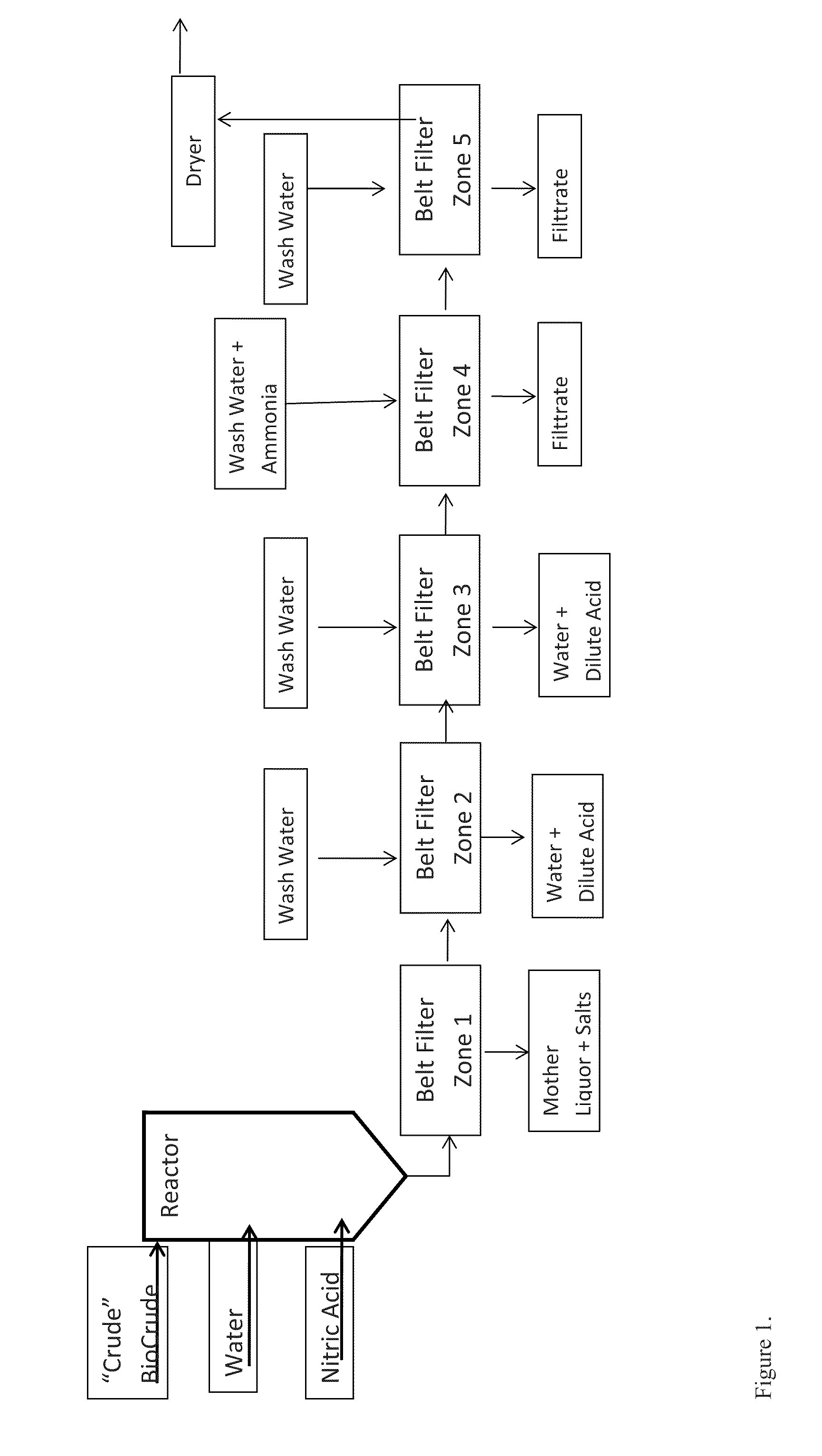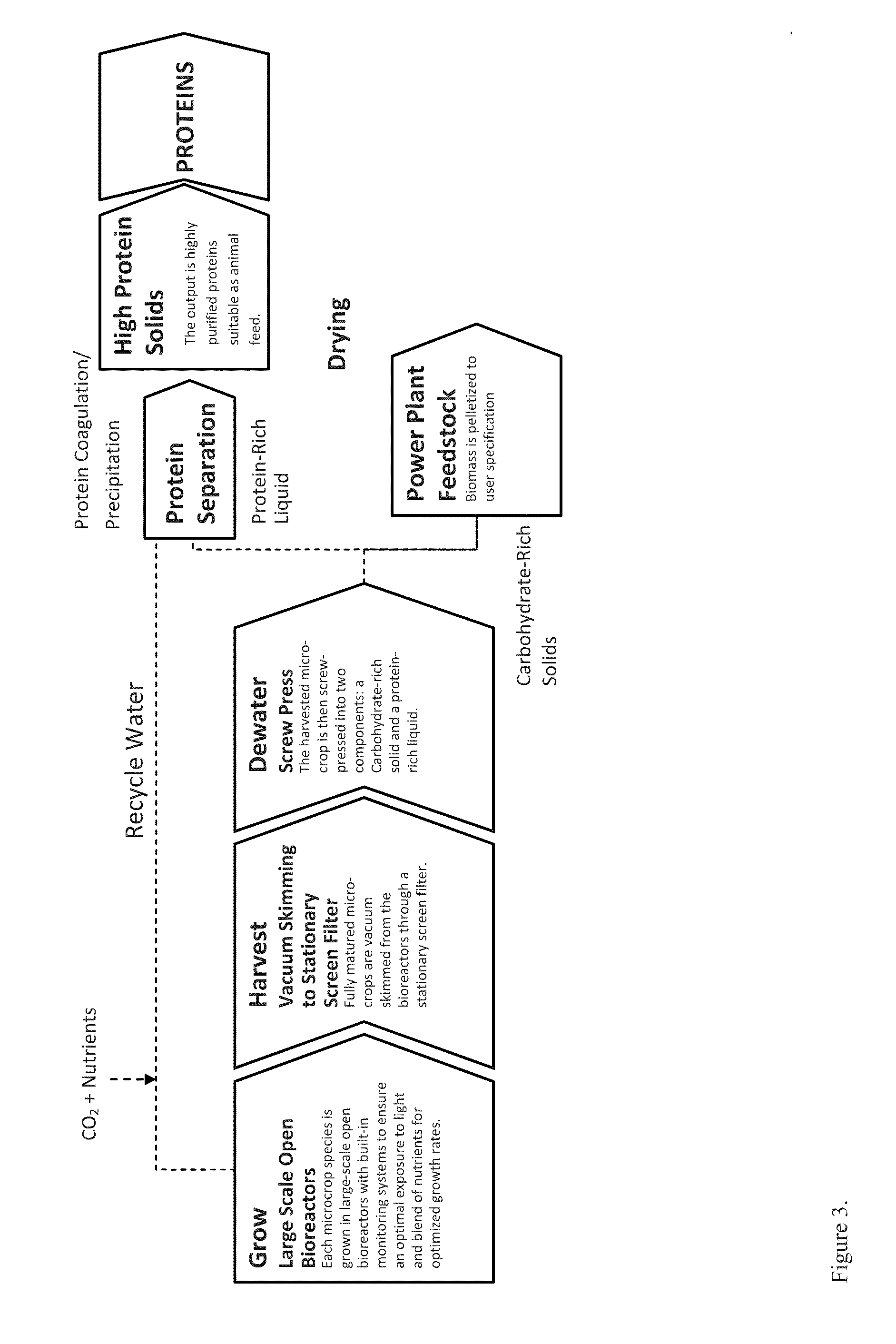Method of ash removal from a biomass
a biomass and ash technology, applied in the field of biomass processing, can solve the problems of affecting the design, operation and performance of the combustor and the boiler, accelerating the metal wastage of the furnace and boiler components, and the impact of biomass ash on the performance of the flue gas cleaning equipment, so as to facilitate the addition of wash water, and facilitate the separation of mother liquor
- Summary
- Abstract
- Description
- Claims
- Application Information
AI Technical Summary
Benefits of technology
Problems solved by technology
Method used
Image
Examples
example 1
Ash Reduction of Biocrude Fraction
[0089]A process of reducing ash content from biomass is described in this example. The process was tested by experiments.
[0090]Biomass was processed to extract proteins and obtain a biocrude fraction. The biocrude fraction included biomass after protein extraction. The biocrude fraction contained mostly carbohydrates and some protein.
[0091]Table 1 shows the ash content of the starting biocrude (labeled “Starting Ash”) and the ash content of the biocrude after treatment (labeled “Final Ash Treated”). In this example, anhydrous HCl and hydrous HCl were tested; 65° C. and 25° C. were tested. Table 1 shows that the initial biocrude contained about 20% ash, and the final ash content was reduced to about 5%.
TABLE 1Reductions in ash contentStartingFinal AshSampleHCLMethanolIncubationDurationAshTreatedBiocrudeAnhydrousRatio65° C.60 minutes20.3%8.5%(no water)3 wt / 1 wtHCL1NBiocrudeHCLRatio65° C.60 minutes20.3%8.3%(water)3 wt / 1 wt1NBiocrudeHCLRatio25° C.60+ mi...
example 2
Ash Reduction of Protein Fraction
[0092]A process of reducing ash content from biomass fraction is described in this example. The process was tested by experiments. After whole lemna biomass was treated for extraction of proteins, the protein fraction was further processed. The last row in Table 1 shows the ash content of the starting protein fraction and the ash content of the protein fraction after treatment.
[0093]Table 1 shows that the initial biocrude contained about 20% ash, and the final ash content was reduced to about 5% to 8%.
example 3
Biomass Growth and Processing System
[0094]FIG. 1 shows an overview of the ash reduction system, which includes a co-counter current wash with neutralization process. Biocrude, water, and nitric acid are combined in a reactor. The reaction mixture enters the belt filter zone 1, from which the mother liquor and salts are removed. The remaining mixture is fed to the belt filter zone 2, and wash water is added to remove water and dilute acid. The washed mixture is fed to the belt filter zone 3, and wash water is added to remove water and dilute acid. The twice-washed mixture is fed to belt filter zone 4, and wash water and ammonia are added to remove the filtrate. The mixture is fed to belt filter zone 5, and wash water is added to removed more filtrate. The remaining mixture is fed to the dryer for further processing.
[0095]FIG. 2 shows an overview of the ash and protein reduction process from biocrude. The biocrude is treated with one or more bases. The mixture is washed with water, tr...
PUM
| Property | Measurement | Unit |
|---|---|---|
| Temperature | aaaaa | aaaaa |
| Temperature | aaaaa | aaaaa |
| Temperature | aaaaa | aaaaa |
Abstract
Description
Claims
Application Information
 Login to View More
Login to View More - R&D
- Intellectual Property
- Life Sciences
- Materials
- Tech Scout
- Unparalleled Data Quality
- Higher Quality Content
- 60% Fewer Hallucinations
Browse by: Latest US Patents, China's latest patents, Technical Efficacy Thesaurus, Application Domain, Technology Topic, Popular Technical Reports.
© 2025 PatSnap. All rights reserved.Legal|Privacy policy|Modern Slavery Act Transparency Statement|Sitemap|About US| Contact US: help@patsnap.com



